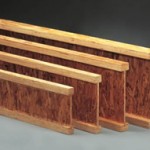Structural Collapse Insights and Aides from NIST
By Christopher J. Naum, SFPE on Mar 04, 2019 with Comments 0
 In case you missed these are or are first to see these now, informative information on Structural Collapse previously issued by NIST. This supplements the continuing research and effort by UL, NIST and numerous other academic and research institutions. From Fire.gov. http://www.nist.gov/fire/collapse.cfm
In case you missed these are or are first to see these now, informative information on Structural Collapse previously issued by NIST. This supplements the continuing research and effort by UL, NIST and numerous other academic and research institutions. From Fire.gov. http://www.nist.gov/fire/collapse.cfm
Structural Collapse Fire Tests: Single Story, Wood Frame Structures
A series of fire tests was conducted in Phoenix, Arizona to collect data for a project examining the feasibility of predicting structural collapse. The fire test scenario was selected as part of a training video being prepared by the Phoenix, Arizona Fire Department. Multiple fires were started in each structure to facilitate collapse; the fires were not intended to test the fire endurance of the structures. Four structures with different roof constructions were used for the fire tests. Temperatures were measured as a function of time in four locations within each structure. Furniture items were placed in the front and back of each structure to simulate living room and bedroom areas. The living room and bedroom areas of each structure were ignited simultaneously using electric matches. Peak temperatures obtained during the tests ranged from approximately 800 °C (1500 °F) to 1000 °C (1800 °F). The roof of each structure collapsed approximately 17 minutes after ignition. In addition to the full scale tests, the plywood and oriented strand board (OSB) roofing materials were tested using a cone calorimeter to characterize the fire properties of the materials.
REPORT
Structural Collapse Fire Tests: Single Story, Wood Frame Structures.
VIDEOS
Windows:
Wood Frame Structure Test 1, Shingles over Plywood
Wood Frame Structure Test 2, Singles over OSB
Wood Frame Structure Test 3, Tile over Plywood
Wood Frame Structure Test 4, Tile over OSB
Quicktime:
Wood Frame Structure Test 1, Shingles over Plywood
Wood Frame Structure Test 2, Singles over OSB
Wood Frame Structure Test 3, Tile over Plywood
Wood Frame Structure Test 4, Tile over OSB
Structural Collapse Fire Tests: Single Story, Ordinary Construction Warehouse
Two fire tests were conducted in a warehouse located in Phoenix, Arizona to develop data for evaluation of a methodology for predicting structural collapse. A firewall was constructed to divide the warehouse into two fire compartments. Temperatures were measured as a function of time in three locations during the first test and in two locations during the second test. In addition, the volume fraction of carbon monoxide was measured at selected locations during each test. Stacks of wood pallets were used as the primary fuel source and were ignited using paper and an electric match. Some combustible debris and the building structural elements provided the remainder of the fuel load. Peak temperatures obtained at different elevations ranged from approximately 300 °C (570 °F) to 800 °C (1470 °F). Peak carbon monoxide volume fraction reached 4 % in the first test and 5 % during the second test. The roof of the front half of the structure burned through approximately 18 min after ignition of the fire for the first test. The roof of the back half of the structure burned through about 15 min after the start of the second test.
REPORT
Structural Collapse Fire Tests: Single Story, Ordinary Construction Warehouse
VIDEOS
Windows:
Warehouse, Back Half
Warehouse, Front Half
Quicktime:
Warehouse, Back Half
Warehouse, Front Half
Trends in Firefighter Fatalities Due to Structural Collapse, 1979-2002
Between the years 1979 and 2002 there were over 180 firefighter fatalities due to structural collapse, not including those firefighters lost in 2001 in the collapse of the World Trade Center Towers. Structural collapse is an insidious problem within the fire fighting community. It often occurs without warning and can easily cause multiple fatalities.
As part of a larger research program to help reduce firefighter injuries and fatalities the U.S. Fire Administration (USFA) funded the National Institute of Standards and Technology (NIST) to examine records and determine if there were any trends and/or patterns that could be detected in firefighter fatalities due to structural collapse. If so, these trends could be brought immediately to the attention of training officers and incident commanders and investigated further to determine probable causes.
REPORT
Trends in Firefighter Fatalities Due to Structural Collapse 1979-2002
Collapse Prediction Technology
A field-based monitoring technique that utilizes measurements of fire-induced vibration was developed and first demonstrated under a previously funded research effort. This report details the findings of the ensuing 3-year endeavor in which significant improvements were made to both field-test and analysis procedures. A real-time monitoring tool has been developed and numerous full-scale burn tests on a variety of structures have been completed. A significant contribution of the research stems from the use of system stability theory to aid in the interpretation of the field measurements. The techniques described in this report can be used to monitor burning structures and to provide visual indicators that track changes in structural stability.
REPORT
Early Warning Capabilities for Firefighters:Testing of Collapse Prediction Technologies
VIDEO
Windows:
Strip Mall Collapse Experiment
Quicktime:
Strip Mall Collapse Experiment
Filed Under: Anatomy of Buildings • Research • Research Hub • Statistics & Data • The Collapse Zone
























